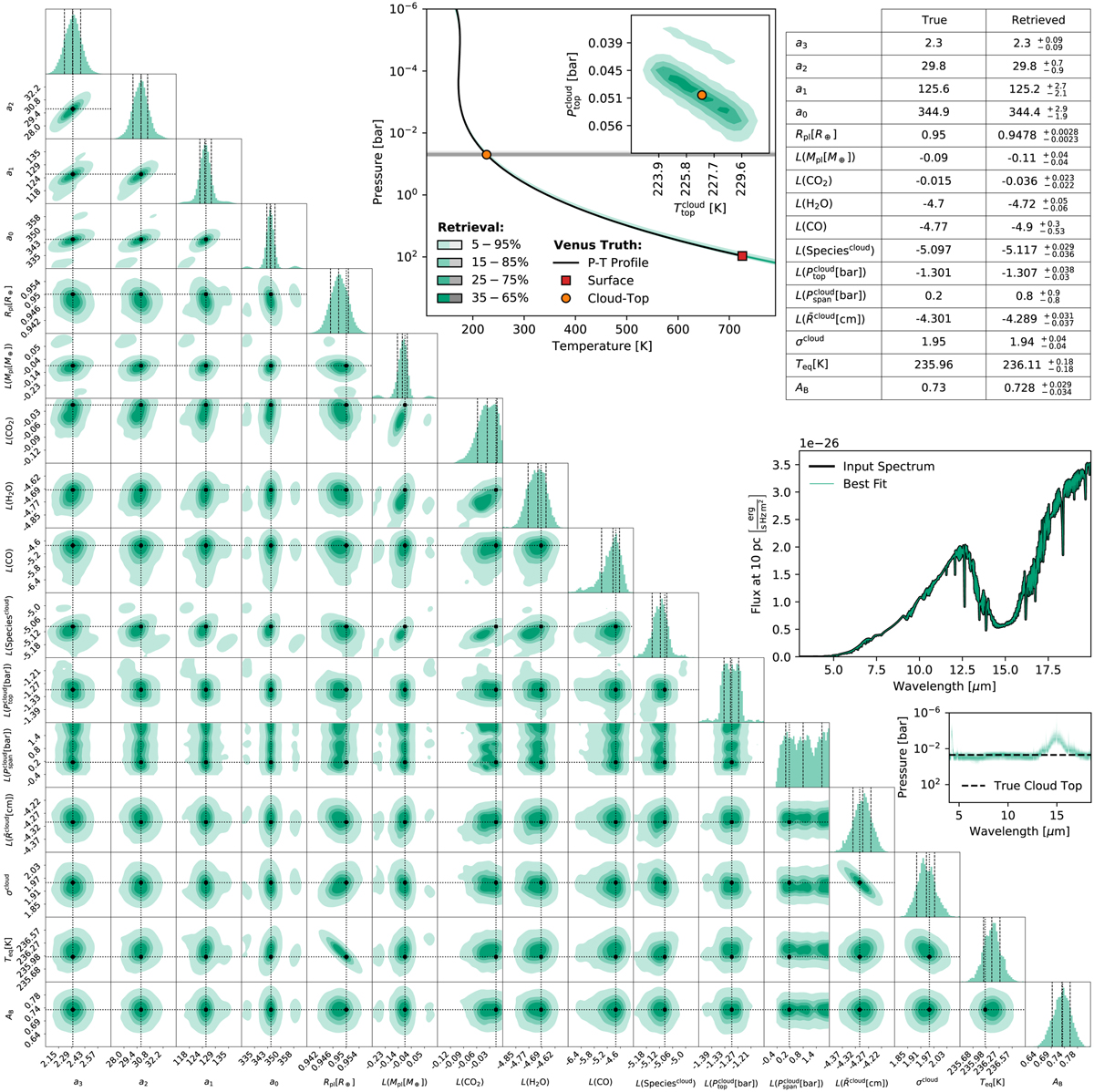Fig. C.1

Download original image
Results from the validation retrieval on the 3 – 20 μm, R = 1000, and photon noise S/N = 50 Venus-twin spectrum (opaque H2SO4 clouds) using the opaque H2SO4 cloud forward model (see Sect. A). Lower left half : Corner plot of the posterior distribution of the forward model parameters. Here, L(·) stands for log10(·). We derived the equilibrium temperature Teq and the Bond albedo AB from the other posteriors (see Appendix B). The dotted black lines indicate the true values. In the 1D posteriors, we show the 16th, 50th, and 84th percentiles as black dashed lines. Top center: P–T profiles corresponding to the retrieved P–T parameters. Color-shaded regions indicate percentiles of the retrieved P–T profiles. The gray shaded regions indicate percentiles of the retrieved cloud-top pressure. The solid black line, the orange circular marker, and the red square marker represent the true Venus-twin P–T profile. In the inset figure, we plot the 2D P0-T0 posterior. Top right: A table summarizing the true values of the forward model parameters and the 16th, 50th, and 84th percentiles of the parameter posteriors. Center right: Comparison of the retrievals best fit to the Venus-twin input spectrum. The thin colored line represents the best fit, the thick black line the Venus-twin input spectrum. The uncertainties on the best fit are too small to be visible. Below the spectrum plot, we show the mean wavelength-dependent contribution of the atmospheric layers to the emission spectrum corresponding to the retrieved parameter posteriors. Darker colors indicate higher contributions. The dashed black line indicates the position of the cloud-deck assumed to simulate the input spectrum (opaque H2SO4 clouds).
Current usage metrics show cumulative count of Article Views (full-text article views including HTML views, PDF and ePub downloads, according to the available data) and Abstracts Views on Vision4Press platform.
Data correspond to usage on the plateform after 2015. The current usage metrics is available 48-96 hours after online publication and is updated daily on week days.
Initial download of the metrics may take a while.


